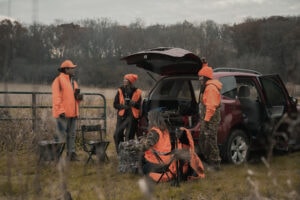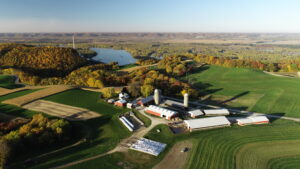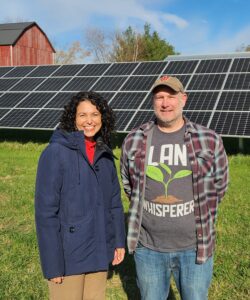Beef Cutout Value Is Showing Strength
The following report was prepared and written by Jeff Swenson, DATCP’s livestock and meat specialist the week of 11/3. This report draws information from several sources, including trade publications, radio broadcasts, agricultural news services, individuals involved in the industry as well as USDA reports.
Cattle
Last week brought a high level of volatility to the market. Cash fed cattle were lower, although negotiated trade in the South was steady by week’s end. Some traders are questioning the accuracy of the recent Cattle on Feed report, but no one can cast doubt on the impact it had on the cattle complex. Feeder cattle prices at auction markets across the country were mostly lower. All indications tell us many beef heifers are being marketed as feeders and feds. There are reports that herd rebuilding is taking place in some regions, but it is limited.
Cash cattle were $2.40 lower with the National Daily Cattle and Beef Summary publishing a weighted average beef breed steer price of $183.53. Even at this lower level, fed steer prices are $32.00/cwt higher than a year ago. The Choice beef cutout value is showing strength, up $1.85 to average $306.49. The weekly harvest estimate of 636,000 head was 2,000 lower than the previous week and 31,000 head below the same week last year. The USDA released a Cold Storage report last week showing that beef in freezers on September 30 were 6% higher than August, but 20% below September of last year.
Cattle Prices
Fed cattle prices were steady with last week. High Choice and Prime beef breed steers and heifers brought $173 to $178/cwt with highs of $185/cwt. Choice steers and heifers ranged from $166 to $173/cwt. with mixed grading and those likely to grade Select bringing $155 to $166/cwt. Holstein steers were mostly steady, bringing $150 to $158/cwt with some lots from $158 to $162. Lower grading steers brought $125 to $150. Silage fed, under finished, or heavy dairy breed steers brought $75 to $125/cwt. Dairy x Beef steers were bringing $126 to $173 with a few to 180/cwt.
Cows were $2 lower. A bulk of the cows brought $67 to $95/cwt, with some fleshier dairy and beef cows selling to $105/cwt, with reports of individuals selling higher. Doubtful health and thin cows were bringing $67/cwt and down. Dairy breed bull calves were steady, bringing $100 to $300/cwt with some heavier, well-managed calves selling to $420.
Beef and Beef Cross calves were lower, selling up to $700/cwt.
Hogs
Lean hog futures contracts recovered more quickly than the cattle complex last week. The December Lean Hog contract ended the week $4.40 higher. Cash hog prices were called $1.50 lower, however. Packers did bid higher to open this week. The pork cutout value was lower, averaging $87.37.
Last week’s estimated hog harvest was 2.614 million, up 4,000 on the week and 50,000 head higher than a year ago. Even with larger weekly harvest totals, pork production has leveled off and is comparable to a year ago due to lower hog weights. Ample supply of market hogs will continue into 2024.
Pork in cold storage is 14% below a year ago, and down 1% from the end of August. All primals in storage were lower except for loins. Net pork export sales for October 13-19, 2023 were down 8% from the previous week and from the prior four-week average. Mexico (10,200 metric tons) and China (3,400 metric tons) were the leading buyers.
Lamb
Cash fed lambs were mixed last week. The USDA National Sheep Summary called traditional lambs $10 to $15 lower, with light lambs steady to $20 higher. Ewes were steady to $5 lower with feeder lambs showing good demand and called $7.00/cwt higher.
Harvest continues to outpace last year with last week’s estimate at 37,000 head. That is 1,000 more than the previous week and 3,000 more than a year ago.
The lamb cutout jumped $8.49 last week to finish at $471.57. Holiday demand will be key in maintaining American lamb prices through the end of the year.
Lamb and mutton in cold storage at the end of September was 15% lower than a year ago.
Market lambs were lower from $160 to $190/cwt.
Wisconsin Brings Home 2 More National Winners
Ethan Lulich of the Mauston FFA Chapter is the 2023 National FFA Agricultural Proficiency Award winner in the Landscape Management – Entrepreneurship/Placement category.
Lulich works for his father’s landscaping business, which includes a retail garden center, landscaping installation crew, and a lawn care maintenance crew. He helps design outdoor living spaces including patios, firepits, sitting walls, walkways, stairs, lighting, irrigation systems, and water features. Lulich is supported by his parents, Lori and David, and his FFA advisor, Beth Babcock.
Cody Hudziak of the Weuaywega-Fremont Chapter also came home a winner. Hudziak is is the 2023 National FFA Agricultural Proficiency Award winner in the Vegetable Production – Entrepreneurship/Placement category.
He has two placements for his supervised agricultural experience (SAE): one at the aquaponics system in his agriculture classroom and the other at Del Monte Foods. He was manager of the aquaponics system, growing buttercrunch lettuce in the system that is grown in water with fish waste. At Del Monte, he worked to grow green beans, potatoes, carrots and beets. Hudziak is supported by his parents, Kimberly and Duane, and his FFA advisors Sandra Dykes, Connie Peterson and Jessica Magdanz.
Your Deer Could Stock A Food Pantry
The Wisconsin DNR encourages hunters to donate Wisconsin-harvested deer through the DNR’s Deer Donation Program. The program helps stock food pantries for the upcoming holiday season and supports residents in need throughout the state.
The program started in 2000. Since then, hunters have donated 98,000 deer, totaling over 3.9 million pounds of venison, to help Wisconsinites in need.
Wisconsin has a network of venison donation partners. This includes county land and water conservation departments, food pantries, charitable organizations, USDA – Wildlife Services and participating meat processors. They all help implement and administer the program.
“This is a great opportunity for hunters to showcase their sportsmanship and help individuals in their local communities facing food insecurity,” says DNR program administrator Grace Nugent.
According to data from the Department of Health Services, more than 900,000 Wisconsin residents received food assistance in 2022.
“There is a big demand for venison provided through the Deer Donation Program, and we are hopeful hunters will continue to donate their deer and help those in need,” she says.
Hunters interested in donating a Wisconsin-harvested deer to the DNR’s Deer Donation Program should follow these steps:
- Field dress the deer.
- Register the deer through GameReg: https://gowild.wi.gov/wildlife/harvest Please note the registration confirmation number and keep it on hand when dropping off the deer.
- Test the deer for CWD before taking the deer to a processor if harvested from a CWD-affected county. A list of CWD sampling locations is available on the DNR’s Sampling For Chronic Wasting Disease webpage: https://dnr.wisconsin.gov/topic/WildlifeHabitat/registersample
- Call ahead. Contact a participating processor before dropping off the deer to make sure they have space to accept it. Some processors might join later in the season, so check back if you don’t see one currently in your area: https://widnr.widen.net/s/mfx7dpjzzq/processor_deer_donation_list
- Bring the deer to the processor. If donating a deer being tested for CWD, inform the processor and provide the CWD barcode number. The processor will not distribute the deer until the results are known.
Meet Another Leopold Finalist – Noll’s Dairy Farm
Images courtesy of Mark Noll.
Mark Noll describes his farm in the Driftless Region as a slice of heaven. But it didn’t get to be that way overnight. Noll’s Dairy Farm in Buffalo County has worked the land for generations to make sure that the soil stays in place, the oak trees grow tall, and the wildlife have a place to call home.
The farm is one of four finalists selected for the 2023 Wisconsin Leopold Conservation Award. Given in honor of renowned conservationist Aldo Leopold, the prestigious award recognizes farmers and forestland owners who inspire others with their dedication to land, water, and wildlife habitat in their care.
The Noll family in Alma has practiced soil and water conservation efforts on their farm for generations. The land sits on top of a 500-foot bluff overlooking the Mississippi River. Mark tells Mid-West Farm Report he can watch the barges go down the river from his tractor seat. Curtis, Mark, and Scott Noll grow cover crops and utilize no-till and contour strip cropping practices to prevent soil erosion.
They also restored and actively manage an ecologically rare dry bluff prairie that is home to many endangered species. Their managed forest provides oak timber production and wildlife habitat.
“I want to leave the land better than when I started. The land is going to be here forever. We’re just here for an eye-blink really,” Mark says. “It’s tough to do sometimes but… when I’m out in the corn planter, there’s no where else I’d rather be.”
In Wisconsin, the $10,000 award is presented annually by Sand County Foundation, American Farmland Trust, Wisconsin Farm Bureau Federation and Dairy Farmers of Wisconsin. But when asked how it felt to be recognized by his community and nominated as a finalist for the conservation prize, Mark says: “We just did it because we thought it was the right thing.”
This year’s recipient will be revealed at November’s meeting of the Board of Agriculture, Trade and Consumer Protection. Earlier this year, owners of Wisconsin farmland and forests were encouraged to apply (or be nominated) for the award. Applications were reviewed by an independent panel of agricultural and conservation leaders.
The other three finalists are:
- Bartling’s Manitowish Cranberry Co. of Manitowish Waters in Vilas County: https://www.midwestfarmreport.com/2023/10/27/a-berry-good-harvest/
- Full Circle Farm of Seymour in Shawano County: story coming soon
- Joe Hovel of Conover in Vilas County: story coming soon
The first Wisconsin Leopold Conservation Award was presented to woodland conservationist Gerry Mich of Appleton in 2006. The 2022 recipients were Joe and Christy Tomandl of Medford.
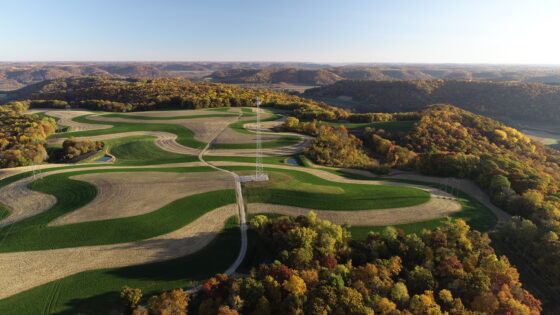
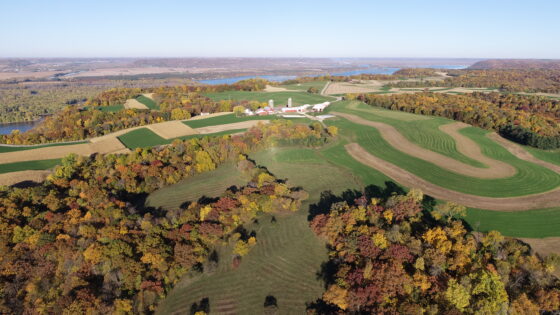
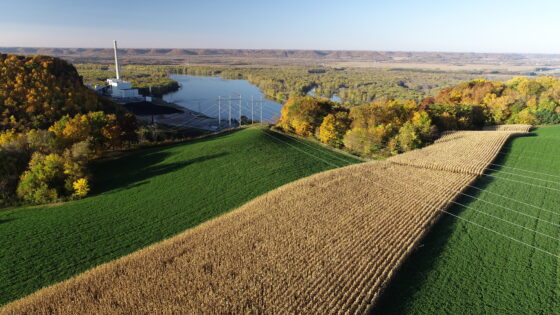
Burning Permit Lifted For Southern Wisconsin
The Wisconsin Department of Natural Resources (DNR) announced that the burning permit requirement in 12 southern Wisconsin counties is now lifted.
The rescinding of this Special Fire Order applies to the following 12 extensive DNR protection area counties outside incorporated cities and villages: all of Columbia, Crawford, Green Lake, Marquette, Portage, Richland, Sauk, Waupaca, Waushara counties and portions of Dane, Grant and Iowa counties.
The original permit reinstatement went into effect on Sept. 18, 2023, due to prolonged drought. A Special Fire Order allows the DNR to suspend burning when the fire danger is elevated.
Recent rain events have improved the overall fire danger and drought situation to allow the department to resume normal burning permit requirements for this time of year. Traditionally, DNR burn permits are required in extensive protection areas from Jan. 1 through May 31, anytime the ground is not snow-covered.
According to the National Weather Service, severe to extreme drought conditions impacted much of southern Wisconsin in late-summer and fall. Several soaking rain events and cooler temperatures aided in the drought recovery, relieving the overall fire danger concerns.
The public is still urged to be careful when having any kind of fire, as the fire danger changes daily and it’s important to check with local fire officials before conducting any outdoor burning.
Check current fire danger, wildfire reports and burning restrictions on the DNR website.
September’s Average Ag Prices Released
On average, Wisconsin farmers got $5.07 per bushel of corn in September. This is 56 cents below the August price and and $2.05 below September 2022. That is according to the latest USDA, National Agricultural Statistics Service – Agricultural Prices report.
Wisconsin farmers averaged $13.70 per bushel for soybeans. This was 60 cents below the August price and 40 cents below the September 2022 price.
The September average oat price per bushel, at $3.82, was 10 cents above August but 71 cents below September 2022.
All hay prices in Wisconsin averaged $158.00 per ton in September. This was $26.00 above the August price and $9.00 above the September 2022 price. The September 2023 alfalfa hay price, at $174.00, was $30.00 above the previous month and $13.00 above September 2022. The average price received for other hay during September was $113.00 per ton. This was $13.00 above the August price and $17.00 above September last year.
The Wisconsin all milk price for September 2023 was $19.80 per cwt, 60 cents above the August price but $2.50 below September 2022. Prices received for milk cows for dairy herd replacement averaged $1,990 per head as of October 1, 2023.
Ag Rescues Present Unique Challenges
It’s not uncommon to come across a slow-moving tractor or harvester that’s slowing up traffic this time of year. The frustration you may have of being stuck behind them when you’re in a hurry can lead to being impatient and, in some cases, reckless behavior.
The question arises: is there really a problem with this situation? The simple answer is yes. In today’s fast-paced world, everyone seems to be in a hurry to get from point A to point B as quickly as possible. A slow-moving tractor or a wide piece of farming equipment can often be perceived as an obstacle, causing frustration and impulsive decisions on the road.
Jerry Minor, Pittsville Fire Chief says, “The consequences of such impatience can be catastrophic. Accidents involving farming equipment on the roadway are no minor affairs. The impact can be severe, causing extensive injuries to those involved. While the occupants of a car might walk away with injuries, the operator of the farming equipment may not be as fortunate. In some cases, the results can be tragic, with someone getting seriously hurt or worse.”
One of the main issues when sharing the road with farming equipment is the size and weight of these machines. Harvesting equipment, tractors, and other implements are massive in size, designed to efficiently move large quantities of agricultural products. They have as much right to use public roadways as any other vehicle. Farming equipment operators must navigate these roads to transport their goods from field to field, and they should be given the space and respect they deserve.
However, some road users make risky decisions, such as passing double yellow lines, which is a serious violation. Minor says that even an ambulance can’t pass on a double yellow, so you shouldn’t either.
Another factor to consider is the load that these farming vehicles carry. Farmers often do not have the luxury of weighing their loads before heading out of the field. They are under pressure to move as much product as possible, based on the limited time available. This means that the edges of the roads, already softened by rain, are susceptible to being damaged. Forcing a farmer to pull too far to the right to allow other vehicles to pass can lead to accidents.
“Safety is not just the responsibility of farmers; it’s a shared commitment,” explains Minor. “When an accident involving farming equipment occurs, the response from local emergency services is crucial. Fire departments, EMS, and other responders must be trained to handle the unique challenges that farm accidents present.”
While no one can anticipate every possible scenario, the principles of safety and efficient response remain the same. Farm accidents have a ripple effect that extends beyond the immediate incident. The downtime for farming equipment, the potential loss of a farmer’s life, and the impact on local communities are all interconnected. Just as with any industry, farming accidents require a specialized approach that accounts for the unique variables at play.
Dairy Strong Has New Location For 2024
Hall of Famer Cal Ripken Jr., baseball’s “Iron Man” who holds the record for most consecutive games played, will be among the featured speakers at Dairy Strong.

The Dairy Business Association announced the full slate of speakers for its largest annual event, which will be held Jan. 16-18 at the KI Center in Green Bay, Wis. In addition to the conference, the event will feature off-site tours and an opening social gathering hosted at Lambeau Field. The theme this year is “Growing stronger through sustainability.”
Dairy Strong attendees will unlock the potential of sustainable farming practices and discover how they can transform their businesses. They will gain practical knowledge and motivation to implement practices that will make a positive impact on the environment and their business.
“We always strive to make Dairy Strong a value for those attending through engaging programs and presenters,” DBA President Lee Kinnard said. “This year, we are excited for a new location and format to provide an even richer experience.”
In addition to Ripken, featured speakers will include Dr. Thomas Barnett, geopolitical strategist, and Scott Caine, President of Aimpoint Research. Caine will unveil Aimpoint’s Farmer of the Future 2.0 research. The research shows a snapshot of how farmers are adapting to a post-pandemic world.
The conference will again feature an Innovation Stage and breakout sessions on sustainability, policy, business and more. The Wisconsin Master Cheesemakers Reception will also be back, and DBA will announce their 2023 Advocate of the Year at dinner on Jan. 17.
Click here to view the conference’s agenda. Registration is open here. Journalists interested in attending can contact Laura Hensley at lhensley@dairyforward.com.
Diesel Prices Up Because Of Supply-Demand Pinch
Why are diesel prices high? Diesel prices are elevated this year for a couple of reasons. One is that there are still lingering impacts from the COVID-19 shutdowns that limit supply. Second is that demand is high for fuel. This puts a pinch on diesel, raising prices, according to Jason Schwantz, vice president of energy sales and marketing at CHS.
“After COVID, we took out about 1 million barrels of refining capacity,” he says. “So we’re producing less, but we’re using about the same amount that we were before. We were low on diesel fuel in the country before.”
Several plants closed during COVID, and they haven’t opened back up because they were dilapidated anyway. The Ukraine-Russia War has also caused diesel prices to elevate in Europe, raising the need for U.S. fuel for export.
Meanwhile, the push for electric vehicles and high interest rates have brought hesitancy to the industry for opening new refineries. In addition, refining delays happen due to labor strains and some lingering supply chain problems for machinery parts.
Schwantz advises that if you can hold off until December/January to refill your fuel tanks for spring, that’s likely when we’ll see another demand lull where prices will ease off. Despite prices being higher, there’s still seasonality for you to take advantage of.
He says even if you don’t buy diesel at the pump, the high prices impact everyone because the products and services we rely on are fueled by diesel. Schwantz says the pinch in the fuel supply chain could keep inflation high for that reason.
USDA Invests Millions In Rural Wisconsin
Deputy Secretary of Agriculture Xochitl Torres Small announced Thursday $19.5 million in investments across three U.S. Department of Agriculture initiatives that are helping farmers adopt new climate-smart agricultural practices, supporting community infrastructure, and increasing economic development in rural Wisconsin towns and communities.
“Thanks to President Biden’s historic investment in rural America, USDA is providing new opportunities for rural people in their hometowns,” said Agriculture Deputy Secretary Torres Small. “USDA is investing in farmers to promote growth and build a stronger, more sustainable economy for people in rural communities throughout Wisconsin and across our country.”
Investments in Wisconsin include:
- $11.92 million in rural jobs and infrastructure awards across five projects
- $5 Million to expand access to renewable energy and lower energy costs for rural Americans through the Rural Energy for America Program (REAP) across 40 projects.
- $2.6 million in Rural Partners Network awards across 19 projects
A full list of projects from today’s announcement is available online.
The announcements are part of the Investing in America agenda. To learn more about the Biden-Harris Administration’s historic investments in rural America, visit the Fact Sheet.
USDA Rural Development provides loans and grants to help expand economic opportunities, create jobs and improve the quality of life for millions of Americans in rural areas. This assistance supports infrastructure improvements; business development; housing; community facilities such as schools, public safety and health care; and high-speed internet access in rural, tribal and high-poverty areas. For more information, visit https://www.rd.usda.gov/wi.


